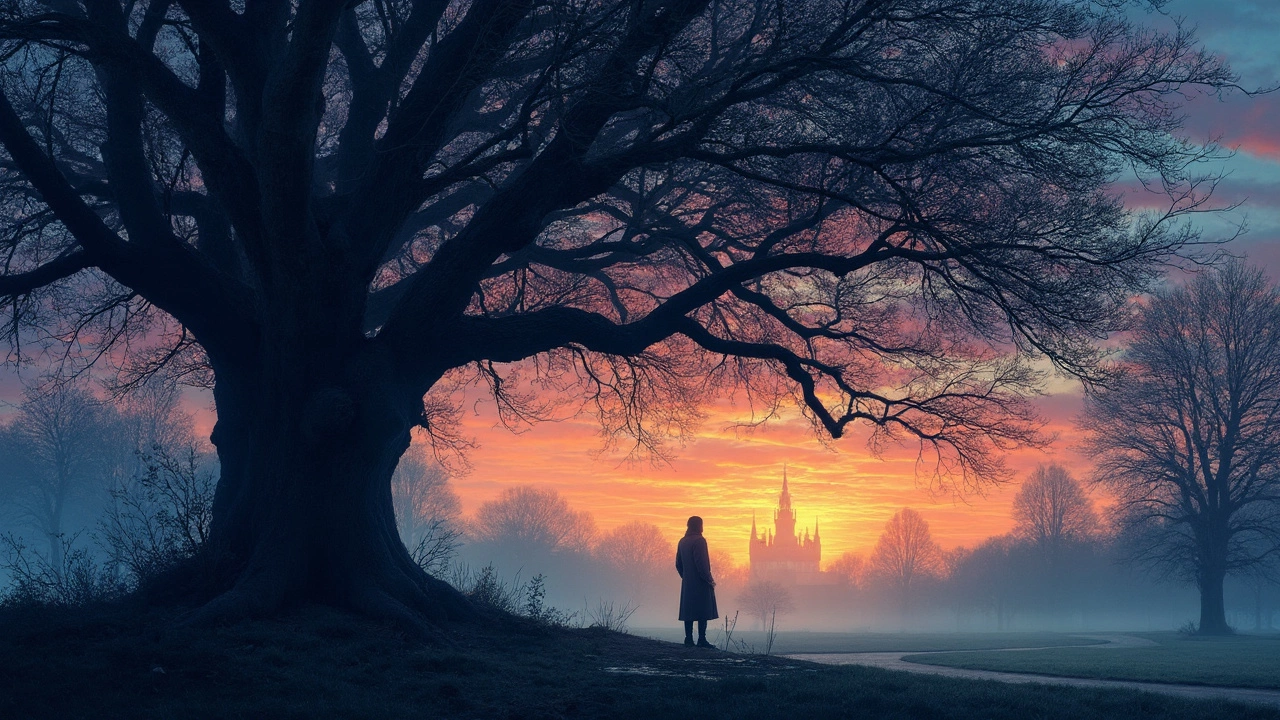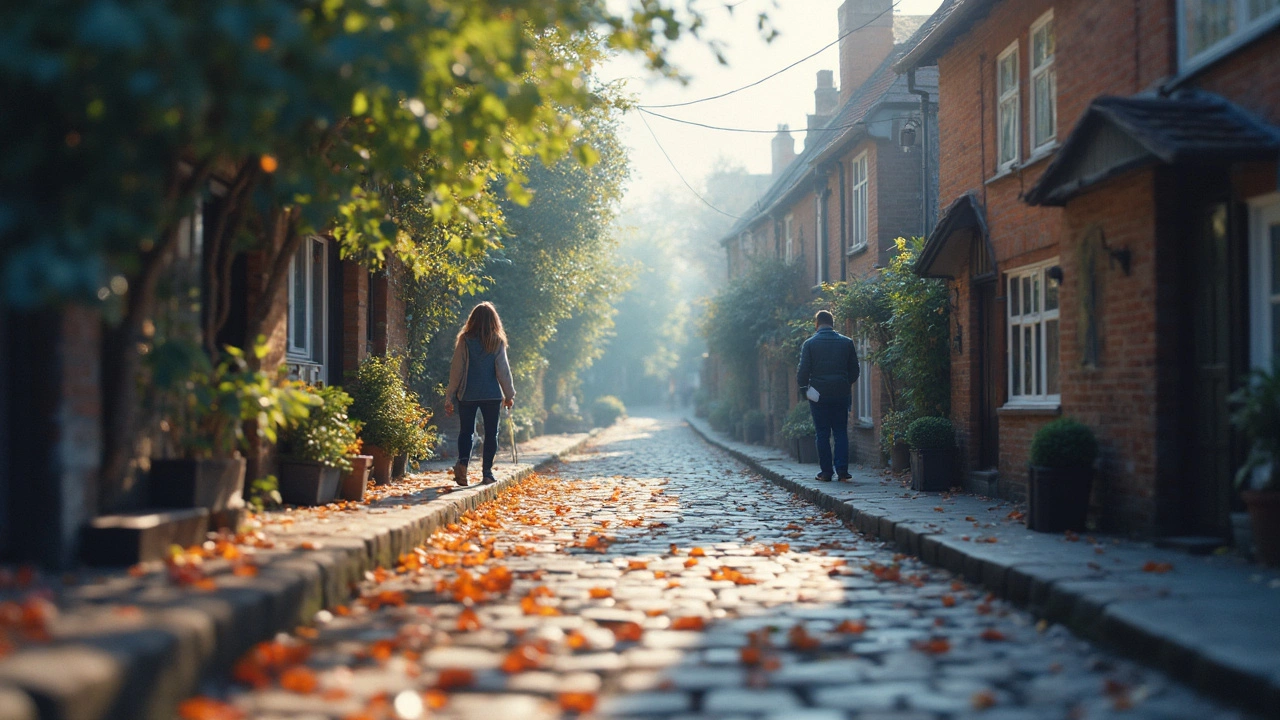When you hear 'fine art photography,' you might picture pristine landscapes or striking portraits, right? But let's talk about something a bit different: genre fine art photography. This fascinating blend takes ordinary life and turns it into art, merging daily scenes with the photographer’s creative vision.
So, what exactly sets genre fine art photography apart? For starters, it’s all about storytelling. You’re not just snapping a picture; you’re inviting viewers into a narrative, with each image sparking its own conversation. A bit like writing a novel with a camera, don’t you think?
Instead of capturing the literal, this style aims for the interpretative. Imagine a scene at a bustling market or a quiet park. Now, tweak reality just a bit—soften some details, enhance others. The goal? To evoke emotions, provoke thoughts, and, most importantly, to make art personal and subjective.
- Introduction to Genre Fine Art Photography
- Key Characteristics
- Techniques and Tools
- Famous Photographers and Works
- The Creative Process
- Practical Tips and Inspiration
Introduction to Genre Fine Art Photography
Genre fine art photography is a blend that brings everyday scenes into the artistic realm. It's not just about capturing what you see; it’s about merging reality with a twist of imagination. This style of photography encourages photographers to dive deep into scenes, capturing the spirit and essence of a moment rather than just the visual details.
One of the things that sets it apart from traditional fine art photography is its focus on storytelling. While a regular photograph might simply show a picturesque landscape or a portrait, genre fine art photography aims to weave a narrative that invites viewers to explore the story behind the image and perhaps even interpret their own.
Characteristics of Genre Fine Art Photography
What makes this type of photography intriguing? First off, it thrives on creativity. Instead of aiming for technical perfection, photographers experiment with composition, lighting, and post-processing to evoke emotions. Their goal is to create visually engaging pieces that stand out and make you think.
Visual storytelling is a key element here. Each photo is like a page in a storybook, complete with drama, emotion, and sometimes a sprinkle of symbolism. It's a perfect playground for photographers who enjoy crafting images that are more about emotional impact rather than sheer documentation.
Why It Matters
In today's visually-driven world, genre fine art photography resonates because it offers a fresh perspective. It’s a way to reinterpret reality, allowing both the creator and the audience to engage deeply with the subject matter. Whether it's bringing attention to social issues or simply sharing an imaginative view of the world, this genre holds a powerful position in the art community.
Looking at examples from accomplished photographers in fine art photography, you can see how they narrate diverse stories, from portraying the quiet moments of everyday life to fantastical imaginary worlds.
Table of Renowned Genre Fine Art Photographers
| Photographer | Style/Approach |
|---|---|
| Sally Mann | Emotive narrative portraits |
| Cindy Sherman | Conceptual portraits |
| Gregory Crewdson | Large-scale staged imagery |
As you can see, genre photography found its niche by allowing freedom of expression and encouraging photographers to push boundaries. If you've ever gazed at a photo and felt compelled to dive deeper into its story, chances are you were looking at genre fine art photography!
Key Characteristics
So, you've got a camera in hand, but what makes a photograph fall under the genre fine art photography umbrella? It's not just about pretty pictures; it's about turning imagination into visual reality. Think an artist with a palette, but this time, the lens is the brush.
First up, let's talk about storytelling. Genre fine art photography isn't just snapping a moment; it's crafting a narrative. Each image should pull the viewer into a story, often taking them somewhere deep inside their own minds.
Unexpected Imagery
One standout trait is the use of unexpected imagery. It's more than capturing reality—it's about interpretations and sometimes abstract concepts. Maybe it's a common object shown in an uncommon way or a familiar scene with a twist. This unpredictability is exactly what keeps viewers engaged.
Creative Use of Light and Shadow
Lighting is another biggie. Photographers in this genre use light and shadow to add mood. The strategic play here can highlight emotions and guide the viewer on a visual journey. Remember, the way you manipulate light can make an ordinary shot extraordinary.
As Annie Leibovitz puts it, “Photography is not about the thing photographed. It is about how that thing looks photographed.”
Emphasis on Emotion and Mood
Genre fine art photography should trigger an emotional response—whether it’s nostalgia, excitement, or contemplation. That's where the art form really shines. By focusing on mood, photographers can connect deeply with their audience.
- Fine art photography thrives on experimentation.
- There's no one-size-fits-all; it's highly subjective.
- A successful piece will often blend different elements of photography styles.
Techniques and Tools
Alright, let's get into the nuts and bolts of creating fine art photography with a genre twist. The cool thing about this style is its flexibility—there's no one-size-fits-all approach. Instead, it's all about finding the right methods that let your creativity shine.
Camera Basics
First, your camera is like your best buddy. Most photographers lean on DSLRs or mirrorless cameras because they offer full manual control. Don't worry; you don't need the priciest gear. A solid understanding of exposure, aperture, and shutter speed can do wonders.
Lighting Techniques
Lighting is your secret weapon. Whether you're shooting indoors or outdoors, natural light often trumps artificial setups. Play around with golden hour for softer shadows and warmer tones—perfect for adding depth to those artistic shots.
Composition and Framing
When it comes to framing, think beyond the ordinary. The rule of thirds is your friend, but breaking the rules can sometimes produce the most striking images. Look for unusual angles or perspectives to keep things interesting.
Editing Software
Post-processing is key in genre photography. Software like Adobe Lightroom or Photoshop can help refine your shots—think color grading, contrast adjustments, or even surreal tweaks that push your work into genuine art territory.
Useful Tools and Gadgets
- Tripod: Steady shots are crucial, especially for long exposures.
- Remote Shutters: Great for avoiding camera shake during long exposures.
- Filters: ND and polarizing filters can help manage light and reflections.
Such setups might vary based on what you're shooting, but keeping these essentials in mind can elevate your game from amateur to professional level. Remember, it's all about experimenting to find what really fits your vision in the world of visual storytelling through your lens.

Famous Photographers and Works
Let’s delve into the world where art meets photography through the lenses of some legendary photographers. These individuals didn’t just take fine art photography for what it was but shaped it into something extraordinary, each bringing their unique perspective to the table.
Annie Leibovitz
Annie Leibovitz is a standout name in the fine art photography world. Known for her distinctive portrait style, she often says, "A thing that you see in my pictures is that I was not afraid to fall in love with these people." Her portraits, particularly of celebrities, blur the lines between reality and art, capturing not just faces but stories.
Cindy Sherman
Cindy Sherman flips the script on traditional genre photography. She uses herself as the model, transformed into various characters, diving deep into themes of identity and the nature of representation in society. Her ‘Untitled Film Stills’ series is iconic because it pushes viewers to question what they’re seeing versus what is truly there.
Henri Cartier-Bresson
If there’s one name synonymous with decisive moments and visual storytelling, it’s Henri Cartier-Bresson. His work epitomizes the art of capturing fleeting moments and turning them into timeless images. He stated, "To photograph: it is to put on the same line of sight the head, the eye, and the heart."
Yousuf Karsh
Yousuf Karsh stands out for his portrait work that goes beyond faces. He got to the essence of his subjects—from Winston Churchill to Albert Einstein—with a keen eye for lighting and an uncanny ability to capture the true character of his subjects.
"In the business of portrait photography, one must learn more than how to pose, light, and push buttons. One must also learn how to interpret." – Yousuf Karsh
The world of genre fine art photography is ever-evolving, with these artists laying down paths for others to follow. Their works are potent reminders that photos are more than just static images—they are windows into different worlds, each telling its own tale.
The Creative Process
Diving into genre fine art photography might seem daunting at first, but let's break it down into something manageable, shall we? At its core, the creative process is about bringing your unique vision to life. It’s this blend of planning and spontaneity that makes the difference between a mundane snapshot and a compelling art piece.
Idea Generation
Every great photo starts with an idea. What emotions do you want to evoke? Are you exploring a theme, like solitude or joy? Don’t shy away from drawing inspiration from books, movies, or even dreams. The key is to jot down those sparks of creativity in a notebook or digital app so you don't lose them.
Planning and Experimentation
While spontaneity plays a role, some planning doesn’t hurt. Think about the location, lighting, and props that could add depth to your photo. Play around with different compositions and perspectives. Sometimes, the shots that break the conventions of traditional fine art photography are the ones that stand out the most.
Shooting
This is where the magic happens. Shoot more than you think you need, because you never know when that unexpected moment might become your masterpiece. Adjusting settings on the fly, trying various angles, or experimenting with techniques can help capture the narrative you’re after.
Post-Processing
Many photographers argue that the story continues in the editing room. Use software like Adobe Photoshop or Lightroom to tweak colors, contrast, and other elements that enhance your theme. But remember, editing should complement your original idea, not overshadow it.
For those curious about how genre fine art photography fares in the real world, surveys have shown that pieces created through this process are especially popular in galleries and exhibitions due to their unique blend of artistic expression and relatable storytelling.
Practical Tips and Inspiration
Diving into genre fine art photography can be super rewarding, and with these practical tips, you'll be creating your own masterpieces in no time.
1. Understand Your Story
First things first, have a clear idea of the story you want to tell. Ask yourself: what emotions or messages do you want to convey? Whether it's a scene of urban chaos or rural peace, having a theme in mind keeps your work focused.
2. Play with Light
Lighting is key in photography, and even more so in fine art. Experiment with natural light, shadows, and artificial sources to create moods that align with your narrative. A sunset might add warmth, while a stark fluorescent might convey sterility or tension.
3. Choose Your Gear Wisely
While gear isn't everything, understanding your tools can enhance your art. A good lens can make a world of difference. Try using a wide-angle for expansive scenes or a macro lens for intimate details. Don’t forget post-processing tools that can bring your vision to life.
4. Break the Rules
Photography rules like the rule of thirds or leading lines are great. But often, breaking them is where true creativity shines. Don't be afraid to experiment and let your unique style redefine these boundaries.
5. Seek Inspiration
Check out works by iconic photographers like Sarah Moon or Gregory Crewdson, known for their transformative approaches to everyday subjects. Visiting galleries, reading photography books, or even binge-watching films can spark fresh ideas too.
6. Keep Practicing
As with anything, practice is key. Regularly shoot and critique your work, inviting feedback from fellow photographers can also be invaluable. You never know, that accidental shot might end up being your magnum opus.
Here's a small data rundown for you:
| Photographer | Famous Genre Work |
|---|---|
| Sarah Moon | Atmospheric Scenes of 1970s Paris |
| Gregory Crewdson | Cinematic Suburban Images |
Remember, fine art photography is about your creative expression. So, be bold, be inspired, and let your camera be the paintbrush that transforms the mundane into the extraordinary.

